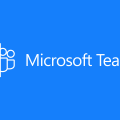34 New Microsoft Teams features estimated for June
Coming soon after the Microsoft Teams roadmap was updated to reflect progress to date and future plans for the next few quarters, the Office 365 Roadmap was just updated. The online roadmap list updates that are currently planned: it’s not gospel but can be really useful in determining what features are coming soon. Each item has a status – from In Development to Rolling Out to Generally Available.
I’ve been monitoring the Roadmap for changes, and yesterday a number of Microsoft Teams features had their Estimated Release Date updated. These aren’t new features that we were unaware of, but their Release Date was made more accurate, and we now have a good idea of when these might be available: June 2018. I think from memory many of these features previously had an Estimated Release Date of Q2 2018, so there’s no major change just a firming up of accuracy.
All these items are marked as being ‘In Development’, and it’s worth reminding you that these are just estimates, they’re not set in stone. What they do, however, is provide really helpful illumination on the things which the Teams team are working on, and which features you can expect to see coming. Here’s that list in full of the 34 items which now have a Estimated Release Date of June 2018:
- 15296: Microsoft Teams: Team Templates – Ability to create and use team templates
- 15294: Microsoft Teams in Canada datacenter – Ability to have Canada data residency for core customer data at rest, plus failover and disaster recovery
- 15293: Microsoft Teams in Australia datacenter – Ability to have Australia data residency for core customer data at rest, plus failover and disaster recovery
- 15109: Microsoft Teams Availability for US Gov – Microsoft Teams is the chat-based workspace in Office 365. It is a smarter way of working as an essential hub for your chats, content, people and tools to keep the team connected. Microsoft Teams will be made available to Office 365 US Government Community (GCC) subscribers as soon necessary compliance is achieved.
- 24222: Microsoft Teams – Federated Meetings – This is one of the SfB meeting capabilities coming to Teams. Enable federated meeting joins from external companies using a user’s ID. This feature is targeted for availability by Q2 CY 2018.
- 24221: Microsoft Teams – Outlook meeting schedule from other platforms (OWA, OLK mobile) – This is one of the SfB meeting capabilities coming to Teams. This feature will enable meeting scheduling on mobile, web, and Mac platforms. This feature is targeted for availability by Q2 CY 2018.
- 24220: Microsoft Teams – Lobby for PSTN callers – This is one of the SfB voice capabilities coming to Teams. Similar to meetings, lobby support will be enabled for PSTN Callers. This feature is targeted for availability by Q2 CY 2018.
- 24219: Microsoft Teams – PSTN Fallback – This is one of the SfB meeting capabilities coming to Teams. This feature supports having a meeting call an attendee via traditional voice to improve call quality. This feature is targeted for availability by Q2 CY 2018.
- 24218: Microsoft Teams – Large Meeting Support (~250) – This is one of the SfB meeting capabilities coming to Teams. This will increase the number of supported attendees in a Teams meeting to a maximum of 250. This feature is targeted for availability by Q2 CY 2018.
- 24217: Microsoft Teams – Cloud Recording – This is one of the SfB meeting capabilities coming to Teams. Record and playback meetings in the cloud. This feature is targeted for availability by Q2 CY 2018.
- 24216: Microsoft Teams – Broadcast Meetings – This is one of the SfB meeting capabilities coming to Teams to enable large townhall-style meetings with Microsoft Teams. This feature is targeted for availability by Q2 CY 2018.
- 24210: Microsoft Teams – Support for features for USB Devices – This is one of the SfB basic supporting capabilities coming to Teams. the USB human interface device class (USB HID class) is a part of the specification for peripherals. This work enables Teams to recognize common signals from USB devices. Examples include but not limited to are Mute and Volume control. This feature is targeted for availability by Q2 CY 2018.
- 24209: Microsoft Teams – Calling Support between Teams and Skype Consumer – This is one of the SfB calling capabilities coming to Teams. Support for 1:1 Skype Consumer Calls. This feature is targeted for availability by Q2 CY 2018.
- 24200: Microsoft Teams – Escalate 1:1 Chat/Call to Multiparty (3 or more people) – This is one of the SfB capabilities coming to Teams. Escalation enables the adding of people to chat, adding video, sharing, and turning your calling into a meeting. This feature is targeted for availability by Q2 CY 2018.
- 24199: Microsoft Teams – Hybrid Connection to Teams – This is one of the SfB calling capabilities coming to Teams. Enable customers to use their on-premises phone trunks with Office 365 and Microsoft Teams for calling. This feature is targeted for availability by Q2 CY 2018.
- 24183: Microsoft Teams – Whiteboard and Meeting notes – This is one of the SfB meetings capabilities coming to Teams. Allows for a whiteboard to be added to a meeting and support for meeting notes. This feature is targeted for availability by Q2 CY 2018.
- 24182: Microsoft Teams – PowerPoint Load and Share – This is one of the SfB meeting capabilities coming to Teams. Enable meeting attendees to upload and present PowerPoint slides. Other attendees can browse forward and back through the deck independently of the presenter. This feature is targeted for availability by Q2 CY 2018.
- 24167: Microsoft Teams – Out of Office Support – This is one of the SfB calling capabilities coming to Teams. This feature will allow users to set an Out of Office status and share that with others. This feature is targeted for availability by Q2 CY 2018.
- 24178: Microsoft Teams – Organizational Auto-Attendant – This is one of the SfB calling capabilities coming to Teams. This feature provides support for the transfer of callers to the extension of a user or department without the intervention of a receptionist or an operator. This feature is targeted for availability by Q2 CY 2018.
- 24177: Microsoft Teams – Forward to Group – This is one of the SfB calling capabilities coming to Teams. This allows for a call to be forwarded to a group. This feature is targeted for availability by Q2 CY 2018.
- 24176: Microsoft Teams – Do not Disturb breakthrough – This is one of the SfB calling capabilities coming to Teams. Do not disturb breakthrough allows users to designate who can breakthrough their DND such as their team members. This feature is targeted for availability by Q2 CY 2018.
- 24175: Microsoft Teams – Distinctive Ring – This is one of the SfB calling capabilities coming to Teams. Distinctive Ring allows the establishment of additional telephone numbers on the same line as an existing number, each number ringing with a distinctive ringing pattern. This feature is targeted for availability by Q2 CY 2018.
- 24174: Microsoft Teams – Call Queues – This is one of the SfB IT Pro calling capabilities coming to Teams. Call Queues provides an organizational greeting, hold music, can redirect calls, and settings for queue size, time out and other handling options. This feature is targeted for availability by Q2 CY 2018.
- 24173: Microsoft Teams – Boss and Delegate Support – This is one of the SfB calling capabilities coming to Teams. Support for Boss Delegation allowing other to answer calling on behalf of others. This feature is targeted for availability by Q2 CY 2018.
- 24850: Microsoft Teams in Japan Datacenter – Ability to have Japan data residency for core customer data at rest, plus failover and disaster recovery
- 24251: Microsoft Teams – Support for existing certified SIP Phones – This is one of the SfB calling capabilities coming to Teams. Support for a range of SIP phones. As we get closer to release, we will specify which phones are supported. This feature is targeted for availability by Q2 CY 2018
- 24245: Microsoft Teams – eDiscovery Enhancements (Meetings) – This is one of the SfB IT Pro meetings capabilities coming to Teams and provides a number of eDiscovery enhancements. This feature is targeted for availability by Q2 CY 2018.
- 24224: Microsoft Teams – User-Level Meeting Policy – This is one of the SfB IT Pro meetings capabilities coming to Teams. This feature provides the ability for the tenant to define a Meetings Policy and apply that policy on a per user basis. This feature is targeted for availability by Q2 CY 2018.
- 24212: Microsoft Teams – 1:1 to group call escalation with Teams, Skype for Business and PSTN participants – This is one of the SfB calling capabilities coming to Teams. Support for 1:1 to group call escalation with Teams, Skype for Business and PSTN participants. This feature is targeted for availability by Q2 CY 2018.
- 24229: Microsoft Teams – Trio One-Touch Teams Meetings Join – This is one of the SfB meeting capabilities coming to Teams. Enable Trio for One Touch Teams Meetings Join. This feature is targeted for availability by Q2 CY 2018.
- 24228: Microsoft Teams – Enable VTC Interop Services – This is one of the SfB meeting capabilities coming to Teams to enable companies to use VTC Interop services from Microsoft partners with Microsoft Teams. This feature is targeted for availability by Q2 CY 2018.
- 24227: Microsoft Teams – Surface Hub Support for Teams Meetings – This is one of the SfB meeting capabilities coming to Teams. Enable Surface Hub to natively join Teams meetings. This feature is targeted for availability by Q2 CY 2018.
- 24226: Microsoft Teams – Skype Room Systems Support for Teams Meetings – This is one of the SfB meeting capabilities coming to Teams. Enable Skype Room Systems to natively join Teams meetings. This feature is targeted for availability by Q2 CY 2018.
- 26529: Microsoft Teams – Consultative Transfer – Consultative Transfer allows the person transferring the call to first confirm with the call destination before completing the transfer. This feature is targeted for availability by Q2 CY 2018
Looking at what’s coming
Looking at what’s coming give us a good sense of where Teams is going, and what the priorities are for the Team Product team. The vast majority of these new features are designed to bring Skype for Business capabilities to Teams, which has been a stated goal for a while now, so it’s great to see how much is being so so fast.
The other standout is the number of features related to data residency. These updates bring Teams data residency for customer data at rest to Canada, Australia, and Japan, on top of India and UK which were recently released. Teams is a huge repository of very sensitive data so it’s only natural for customers to want assurances about where their data is stored – and it’s good to see that, behind the scenes, efforts are being made to accommodate this. It’s easy to think of Teams as being “in the Cloud” and just available anywhere, but the reality of humans and governments is that sometimes there are non-technical reasons which complicate that story. We’ll never really see the effort that goes in behind the scenes to enable data residency which not compromising on data loss prevention, scale, and resiliency, but they’re really important.
What are you most excited for?







